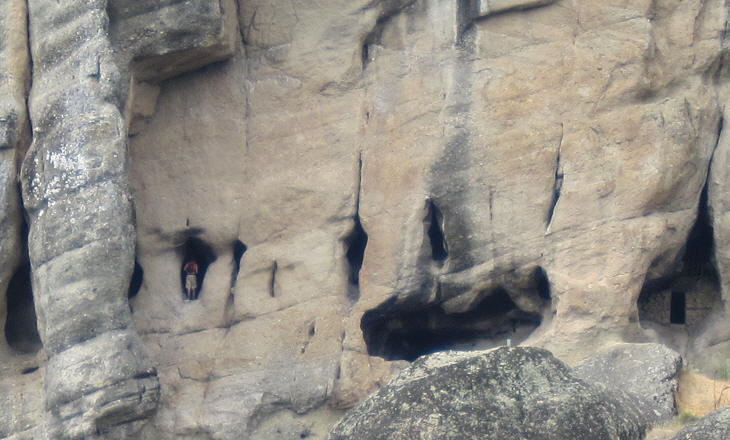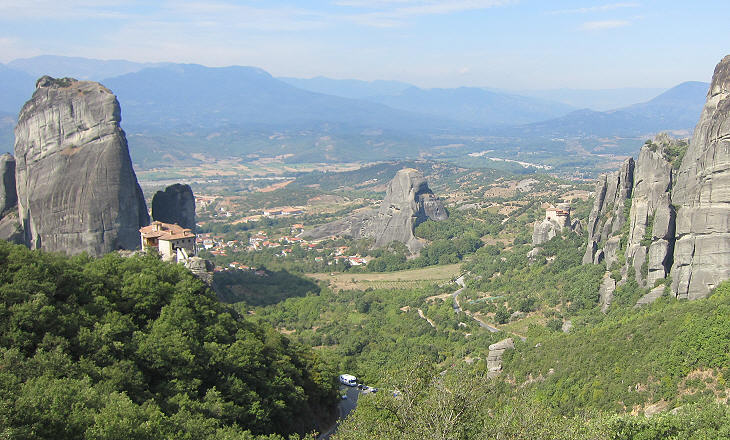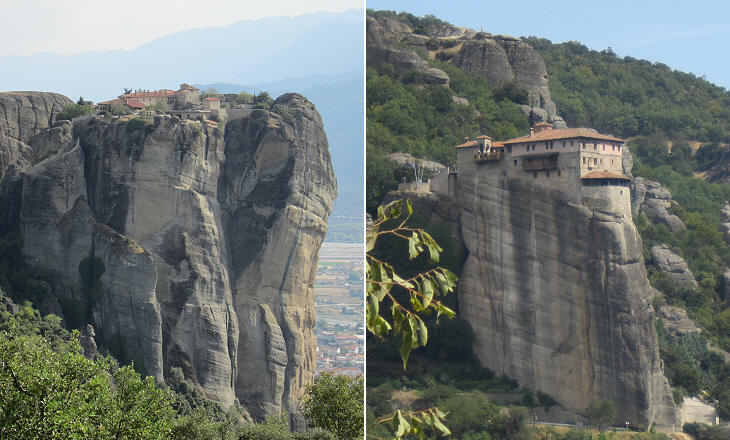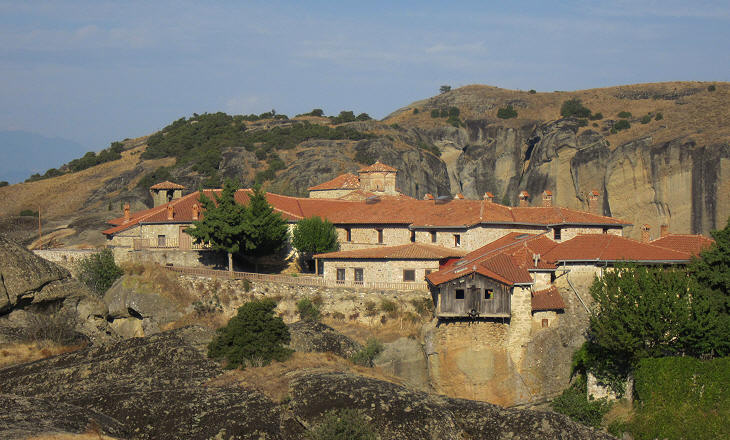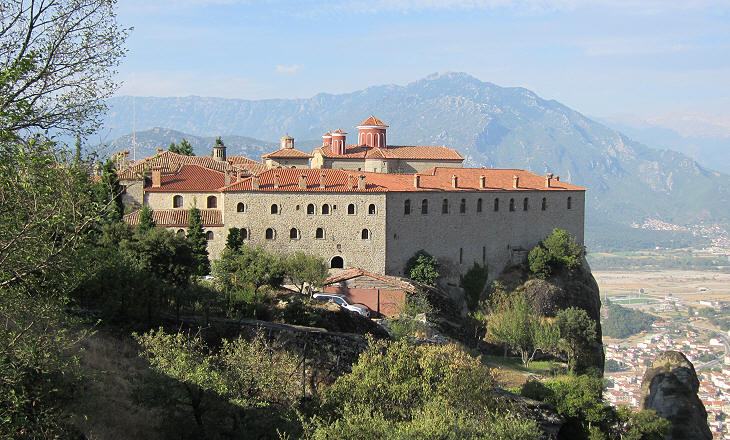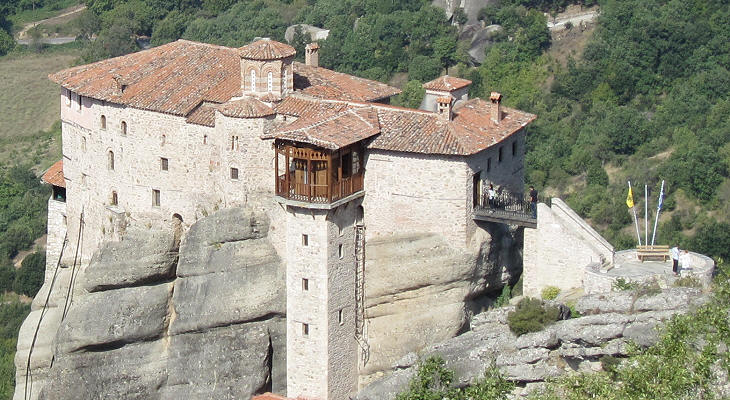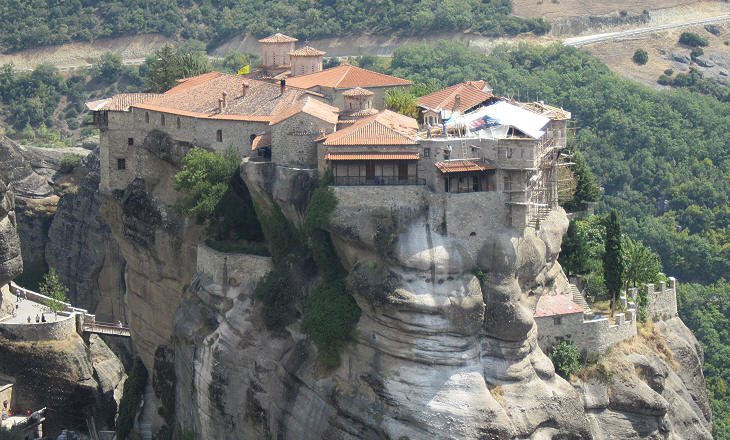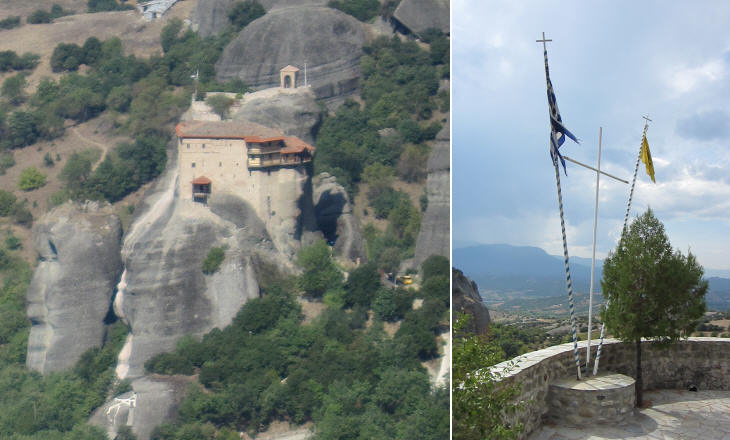  What's New! Detailed Sitemap All images © by Roberto Piperno, owner of the domain. Write to romapip@quipo.it. Text edited by Rosamie Moore. Page added in October 2010. |
  Meteora - page two: the monasteries Meteora - page two: the monasteries
It is generally thought that anchorites (religious people who withdrew from secular life) started to retire in the natural caves of Meteora at around the year 1,000 A.D. Their number probably increased after the Latin conquest of Constantinople in 1204 when security in Greece greatly deteriorated as a consequence of a prolonged period of conflicts and unrest.
Along with anchorites also coenobites (monks living in a small community) settled at Meteora; they chose Doupiani, a rock which stood isolated on the plain, for their Sunday gatherings; they developed techniques for building a church and ancillary facilities on a horizontal crack of the rock where the ruins of an abandoned monastery can still be seen.
Although the construction of the monasteries in such inaccessible locations is often attributed to fear of Ottoman attacks, Megalo Metereon, the largest monastery, was built in 1356 when the Serbians invaded the region. King Stefan IX Dusan promoted the constitution of an autonomous Serbian patriarchate and the monks of Meteora feared that they would be forced to betray their allegiance to the Patriarch of Constantinople.
Megalo Metereon was built on a rock, the top of which provided space for a minuscule citadel, but with the increase of the number of monasteries, some rocks were chosen which offered only very small space for buildings, as in the case of Rousanou.
In 1382 Evrenos Bey, a Byzantine convert, led the Ottomans in the conquest of Thessaly; the region became part of the Ottoman Empire for almost 500 years, during which time the monasteries of Meteora kept Greek culture alive. The reasons for living in inaccessible locations did not subside, because conflicts among local Ottoman officers and among the various ethnic groups which populated the region (Greeks, Turks, Albanians and Vlachs) exposed the monasteries to the risk of raids.
Based on the addition of new facilities and on the decoration of the churches it is possible to say that the XVIth century was a golden century for the monastic communities of Meteora; the Ottoman Empire was at war against alliances promoted by the Popes and sought if not the support, the acquiescence of its Greek subjects; the Patriarch of Constantinople was regarded as a high officer of the Sultan and the practice of the Orthodox religion was not hindered; the heads of the monasteries were regarded as being influential in maintaining overall control of the Christian provinces of the empire.
The situation worsened during the XVIIIth century when the number of Meteora monasteries fell and the attitude of Ottoman authorities started to be wary that the monasteries could hide and assist klephts, the anti-Ottoman insurgents. As a matter of fact the revolt of 1821 which led to the Greek War of Independence was ignited by the Orthodox clergy.
A similar situation occurred during WWII, when the Germans raided some Meteora monasteries in search of Greek partisans; at the end of the war only four monasteries were still active. Today the active monasteries are six; the fee they exact from visitors is small, but high enough to allow the communities to improve and restore their facilities.
Move to page three to visit the monasteries or return to page one. Clickable Map of the Ionian and Aegean Seas with links to other locations covered in this website (opens in a separate window) SEE THESE OTHER EXHIBITIONS (for a full list see my detailed index). 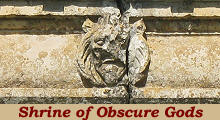 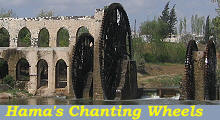 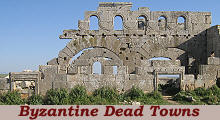
|
